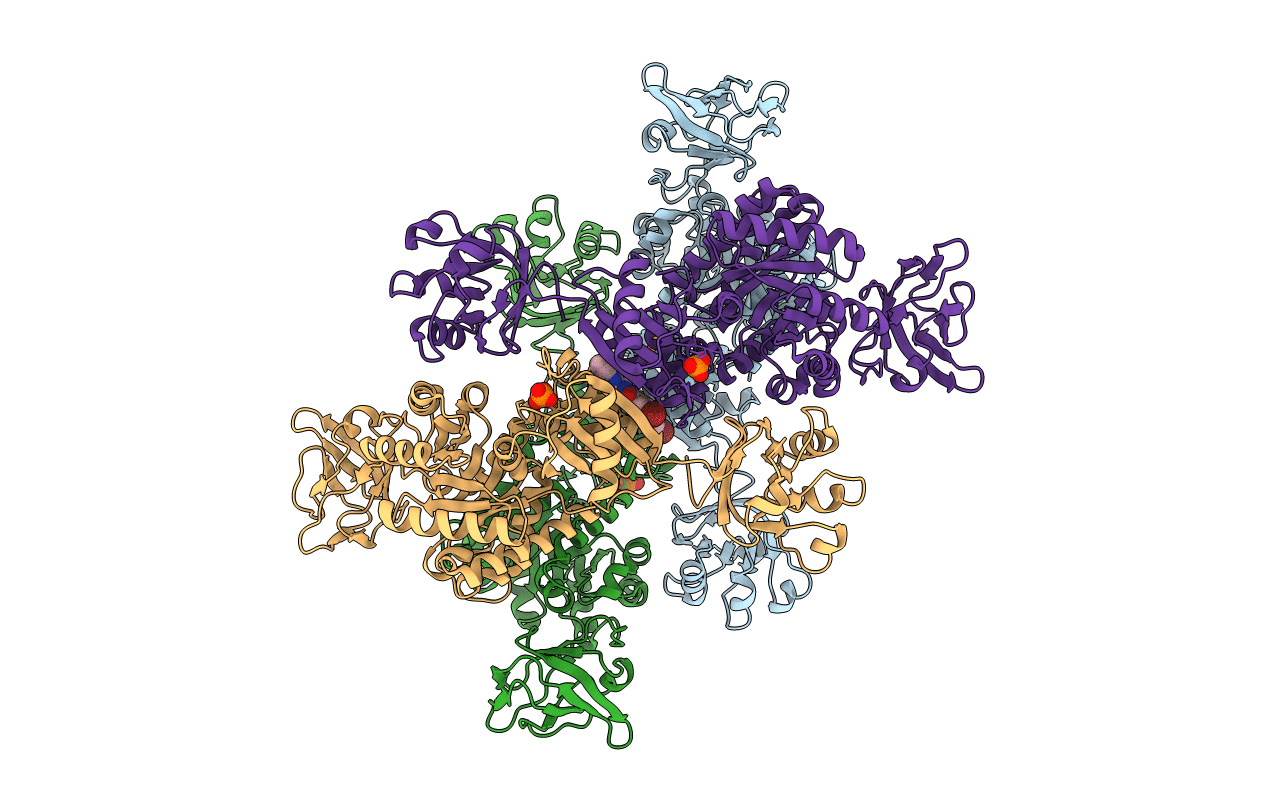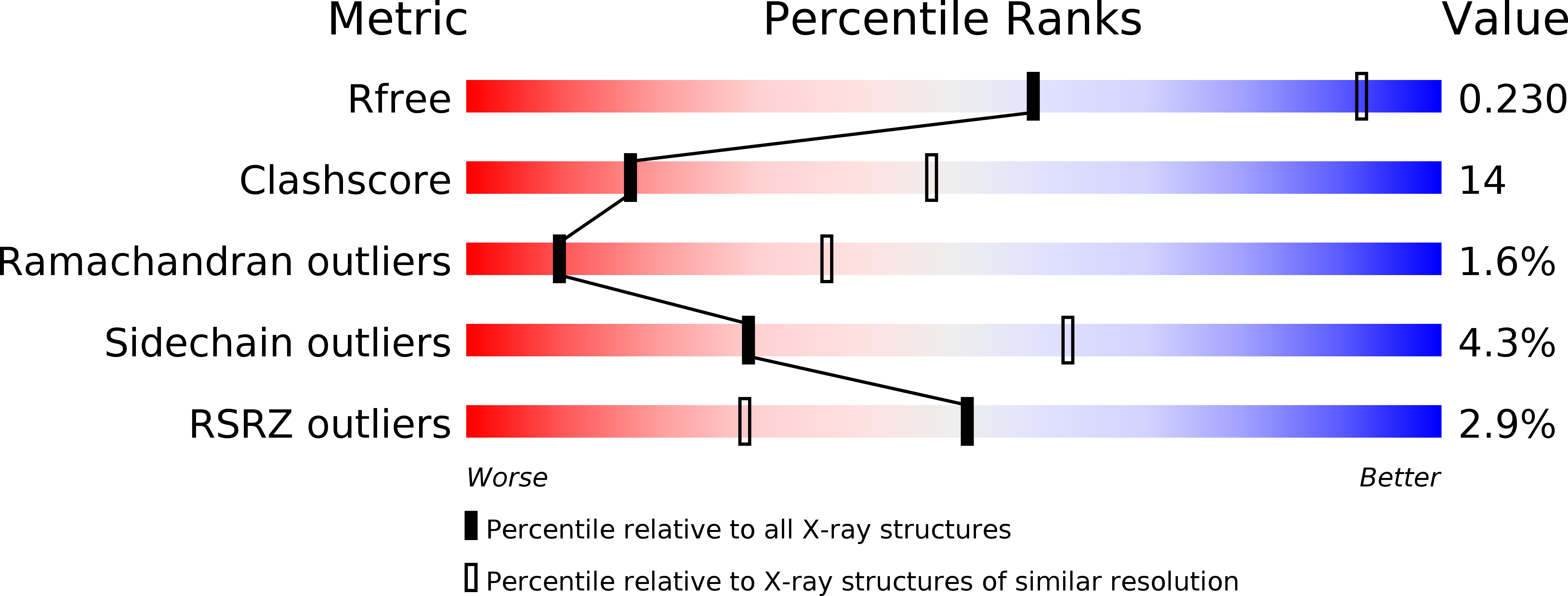
Deposition Date
2011-07-20
Release Date
2012-06-06
Last Version Date
2024-02-28
Entry Detail
PDB ID:
3T0T
Keywords:
Title:
Crystal structure of S. aureus Pyruvate Kinase
Biological Source:
Source Organism:
Staphylococcus aureus subsp. aureus (Taxon ID: 282458)
Host Organism:
Method Details:
Experimental Method:
Resolution:
3.10 Å
R-Value Free:
0.22
R-Value Work:
0.20
R-Value Observed:
0.20
Space Group:
P 41


